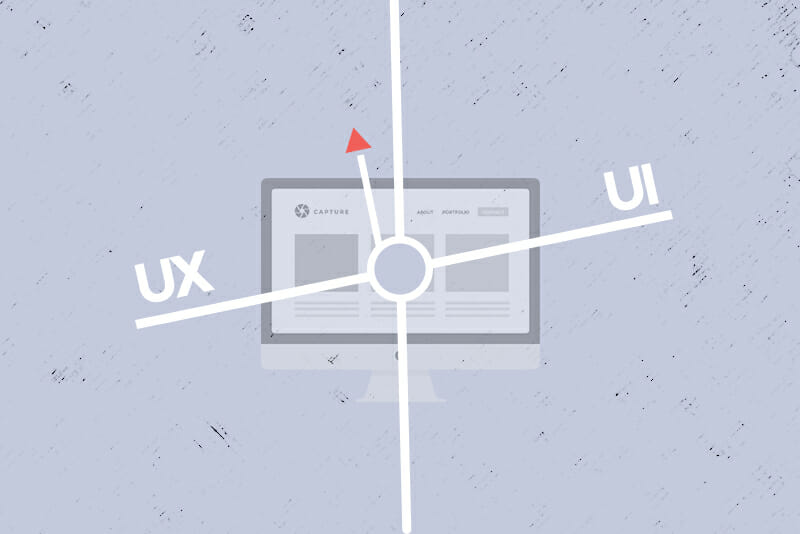Tech 101: What Is UX Design?

Your Top Questions Answered
If you’ve been considering a career in the digital design world, you might have stumbled across the term UX design. If nothing else, the name of the field sounds amazing, right?! (Add an X to anything and it sounds cool and futuristic.)
But what exactly does UX design mean? In this article, we’ll fill you in on all the details you need to know about this fast-growing, in-demand area of tech. We’ll help you understand what you’ll be doing as a UX designer, how much you can earn, and why the work is both important and so interesting!
YOUR QUESTIONS:
- What is UX design?
- What do UX designers do?
- Why is UX design important?
- What’s the difference between UX design and UI design?
- What skills do I need to become a UX designer?
- Do I have to know how to code to be a UX designer?
- Are there many UX design jobs? How much do UX designers make?
SIMPLE ANSWERS… AND THE DETAILS:
1. What is UX design?
Simple answer:
UX stands for user experience and UX design is the field of tech that involves researching user experience with websites and apps, conducting testing with users, and improving the overall user experience on websites and other digital products.
The details:
UX design deals with all aspects of a user’s experience with digital products, including the way it makes them think and feel. If you enjoy your time with a site or app and you can easily achieve what you want to with it, that’s all thanks to good UX design.
Because there are so many things that can influence a user’s perceptions, UX design covers a vast landscape, including the look and feel of a product, the way content is organized within the product, they way users physically interact with the product, and the degree to which the product is accessible to different users across different devices.
2. What do UX designers do?
Simple answer:
UX designers conduct research, create and user test prototypes, and develop designs based on research and user data.
The details:
UX designers start by researching and collecting data about user experiences with specific digital products. Some common research methods include website or app analytics analysis and user interviews. While the goal of this research is to understand user behavior better, the resulting data can be quantitative (like numbers from analytics) or qualitative (like feedback from interviews) or both (like multiple choice and open-ended answers to surveys).
After a UX designer has gotten to know their users, they move on to thinking about the information architecture, or IA, for their design product. IA is the way content is organized and placed on a website or app — the goal is a logical IA so it’s intuitive for people to use.
Once the UX designer has figured out the structure of their product, they create a simple, static sketch called a wireframe, which shows the site or app’s basic layout and features. After the wireframe is developed, the next step is building a working sample, or prototype, of the site or app design.
With the prototype, a UX designer can start testing the product with users. The designer might do a A/B split test, which uses two different versions of the prototype with two sets of users to compare user experiences. Or the designer could conduct usability testing, in which users interact with the prototype while the designer observes. The UX designer then refines the prototype based on testing, and creates a final product design.
3. Why is UX design important?
Simple answer:
Good UX design makes users happy, which makes them want to use your products more and more!
The details:
You know that wonderful feeling when you’re hungry as heck and your dinner delivery comes right on time—and is hot and delicious? That kind of joy and satisfaction is what makes you place your next order with the same restaurant. And the one after that and the one after that.
In the same way, if someone needs to do something using your website or app, and they’re able to achieve it while enjoying themselves, they’re likely to use your digital product again in the future. Good UX design is what creates that useful and pleasant experience, and it’s often the reason customers continue to use a site or app and the business continues to thrive.
4. What’s the difference between UX design and UI design?
Simple answer:
UI design is a specific discipline that’s part of the broader UX design field.
The details:
UI, or user interaction design, focuses particularly on the aspects of a website or application that users see and interact with (like menus and buttons), color and typography, page or screen layout, animations, and physical actions (like clicks and swipes). Because these aspects affect the way a user experiences a product and UX design deals with all aspects of a user’s experience, that makes UI a subset of UX design—and quite an important one, of course.
5. What skills do I need to become a UX designer?
Simple answer:
To be a UX designer, you need to be interested in understanding people and the way they think, enjoy solving problems, be a detailed-oriented critical thinker, and have solid UX design skills.
The details:
As far as technical skills for UX design are concerned, you’ll need to have a foundation in UX design principles and be comfortable with tools like Figma or InVision. You should also know the fundamentals of UX research, information architecture and prototyping, and user testing and analysis.
And, on the soft skills side, your natural curiosity about people and their needs will help you with user research, while a problem-solving mentality will let you come up with creative solutions for your users. And, if you find joy digging into data to find insights, refining small details, and revising your ideas until they’re “just right,” you’re sure to feel at home in the UX design field.
6. Do I have to know how to code to be a UX designer?
Simple answer:
Not necessarily, but it can be a real bonus for you.
The details:
Coding skills aren’t a requirement for UX design, but are often a big advantage. If you know how websites and apps are built, you’ll better understand how your design product can be built, allowing you to communicate clearly with the developers who will actually be building it. And you may even be able to approach your design work more creatively understanding the programming that will go into making it a digital reality. Plus, like with any job, the more skills you have, the more career opportunities available to you. So, why not become a unicorn?
HTML and CSS, the building blocks of the web, would be the place to start if you’re considering coding skills for UX design. Add to that responsive design skills and JavaScript, and you’ll be well on your way as a standout for a UX designer role.
7. Are there many UX design jobs? How much do UX designers make?
Simple answer:
Absolutely! UX design consistently ranks as one of the 50 best jobs in America with all kinds of opportunities in the field.
The details:
As a UX designer, you can expect an average annual salary of around $90k. And, for example, the Indeed job board has thousands of UX designer listings at the moment – and that’s not even close to the limit for UX design positions.
There’s a huge range of roles in UX design so you can also find jobs in specific areas of UX like user research, information architecture, interaction design, and of course UI design. So, if you’re looking for a career with plenty of possibilities and a bright and lucrative future, UX design may be perfect for you!




